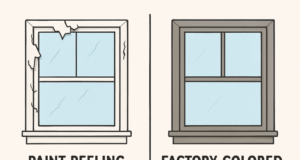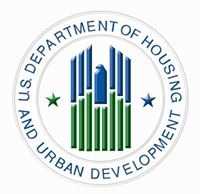Real Estate Industry Expecting to Moderate in the Coming Years, Says Latest Urban Land Institute Real Estate Economic Forecast
WASHINGTON — (RealEstateRama) — The outlook for the US economy, real estate capital markets and real estate fundamentals remains positive but is expected to moderate over the next three years, according to the latest forecast from the Urban Land Institute’s (ULI) Center for Capital Markets and Real Estate. The ULI Real Estate Economic Forecast, which includes predictions for the economy and industry through 2021, is based on a semi-annual survey of 45 of the nation’s leading economists and industry analysts. Responses to the most recent survey, conducted between March and April, suggest that, while growth will continue, it will continue at a slower pace than previous years.

The forecast, which covers 2019, 2020, and 2021, provides predictions for broad economic indicators; real estate capital markets; property investment returns for four property types; vacancy and rental rates for five property types, as well as housing starts and prices. Forecasts for commercial real estate prices are projected to grow at slowing rates relative to recent years, with prices in 2020 and 2021 falling below the long-term average growth rate for the first time since 2011.
“Despite stock and bond market volatility in late 2018 and increasing global trade and growth concerns, the April 2019 ‘ULI Real Estate Economic Forecast’ is surprisingly consistent with the previous forecast conducted in October 2018,” said William Maher, head of research and strategy for LaSalle Investment Management and a survey participant. “Overall, expectations for 2019 and 2020 are flat to up, while the newly introduced 2021 forecast calls for slower growth and returns. Moderating growth in gross domestic product and jobs growth for 2019 to 2021 should lead to slower but still positive real estate demand and absorption.”
Among the survey’s key findings for real estate:
- Transaction volume is projected to moderate from $562 billion in 2018, the second highest post-recession annual volume, to $535 billion in 2019 and $500 billion in 2020. Despite these projected declines, volumes remain substantially above the 18-year average of $327 billion.
- Commercial real estate prices are projected to grow at slowing rates relative to recent years, at 5.0% in ‘19, 3.7% in ’20, and 2.8% in ‘21, with the latter two years falling below the long-term average growth rate of 4.4% for the first time since 2011.
- Institutional real estate assets are expected to provide total returns of 6.0% in ‘19, moderating to 5.0% in both ‘20 and ‘21. By property type, 2019 returns are forecast to range from industrial’s 10.3% to retail’s 2.9%. In ‘21, returns are forecast to range from industrial’s 7.0% to retail’s 3.8%.
- Industrial – Availability rates for the industrial and warehouse sector declined for the ninth straight year in 2018, and economists expect them to reach a new post-recession low of 6.9 percent in 2019 before rising to 7.0 percent in 2020 and 7.1 percent in 2021. This is still well below the 20-year average of 10.1 percent. Forecasts are for healthy but moderating rental rate growth the next three years. Compared to the forecast from six months ago, the forecasts for both industrial/warehouse availability rates and the rental rate growth are more optimistic in 2019 and 2020.
- Apartment – The apartment sector has continued to perform very well, with vacancy rates decreasing from 7.0 percent in 2009 to 4.5 percent in 2018. Vacancy rates are expected to increase slightly each year of the forecast period, to 4.6 percent in 2019, 4.8 percent in 2020 and 4.9 percent in 2021, which are still all below the long-term average of 5.2 percent. Rental rate growth, which was 2.8% in 2018, will moderate to 2.2% by the end of the forecast period, below the long-term average of 2.4%. Compared to six months ago, the forecasts for vacancy and rental rate growth are more optimistic for both 2019 and 2020.
- Office – Office vacancy rates reversed a seven-year decline in 2017, ticking up to 13.0 percent before going back down to 12.6 percent in 2018. Rates are forecast to edge down to 12.5 percent in 2019 before reversing direction and increasing to 12.8 percent in 2020 and 13 percent in 2021. These rates still remain below the 20-year average of 13.9 percent. Rental rate growth is expected to drop over the next three years. Compared to six months ago, the forecast for both office vacancy rates and the office rental rate change are more optimistic for both 2019 and 2020.
- Retail – Retail availability rates were at 9.0% in 2018, which is the lowest post-recession rate, tied with 2016. Survey respondents anticipate slight increases each year of the forecast, inching up from 9.1 percent in 2019 to 9.2 percent in 2020 and 9.4 percent in 2021. Rental rate growth is expected to moderate from its 2018 level of 2.4% to 1 percent by the end of the forecast period. Compared to six months ago, the forecast for retail availability rates is more optimistic for both 2019 and 2020, while the forecast for retail rental rate growth is less optimistic for 2019 and more optimistic for 2020.
- Hotel – Hotel occupancy rates have been steadily improving since 2009, reaching 66.2 percent in 2018, above the 20-year average. Rates are forecast to remain strong over the next three years, staying level at 66.2 percent in 2019, before moderating slightly to 65.9 percent in 2020 and 65.7 percent in 2021. Hotel revenue per available room (RevPAR) growth was 2.9% in 2018, and is expected to moderate steadily over the next three years, reaching 1.0% in 2021. Compared to the forecast six months ago, the current forecast for occupancy rates is more optimistic for both 2019 and 2020, while RevPAR growth is unchanged in 2019 and more optimistic for 2020.
- Single-family – Growth in single family housing starts is expected to continue in 2019 but remains below the long-term average, increasing to 900,000 in 2019 before moderating down to 888,500 in 2020 and 850,000 in 2021. Price growth is expected to moderate during the next three years from 5.6% in 2018 to 2.8% in 2021. Compared to six months ago, forecasts for both housing starts and existing house price growth are less optimistic for both 2019 and 2020.
Among the survey’s findings for major economic indicators:
- Real gross domestic product (GDP) growth is forecast to moderate to 2.3 percent in 2019, and plateau at 1.8 percent in both 2020 and 2021, compared to the long-term average of 2.2 percent. This is less optimistic than the forecast six months ago for 2019, but more optimistic for 2020.
- The current survey shows expectations for 2.1 million more additional jobs in 2019, 1.4 million in 2020 and 1.2 million in 2021. This is more optimistic for 2019 and 2020 than six months ago.
- The ten-year Treasury rate is expected to increase slightly to 2.8 percent in 2019 from its ending rate of 2.7 percent in 2018, and plateau at 2.9 percent in 2020 and 2021.
The market survey is the most recent in a series of polls conducted by ULI to gauge sentiment among economists and analysts about the direction of the real estate industry. The next ULI Real Estate Economic Forecast survey is scheduled for release in October 2019.
NOTE TO REPORTERS AND EDITORS: ULI’s Real Estate Economic Forecast survey results were released today during a ULI webinar open to ULI members and the press. Webinar participants were Jeanette Rice, Americas head of multifamily research, CBRE; Adam Ruggiero, head of real estate research, MetLife; Bill Maher, head of research and strategy, LaSalle Investment Management; and Stewart Hoffman, senior vice president and senior economic advisory, PNC. Contact Trish Riggs, , or Justin Arnold,
, for access to the archived webinar
Contact Trish Riggs, 202-679-4557;













